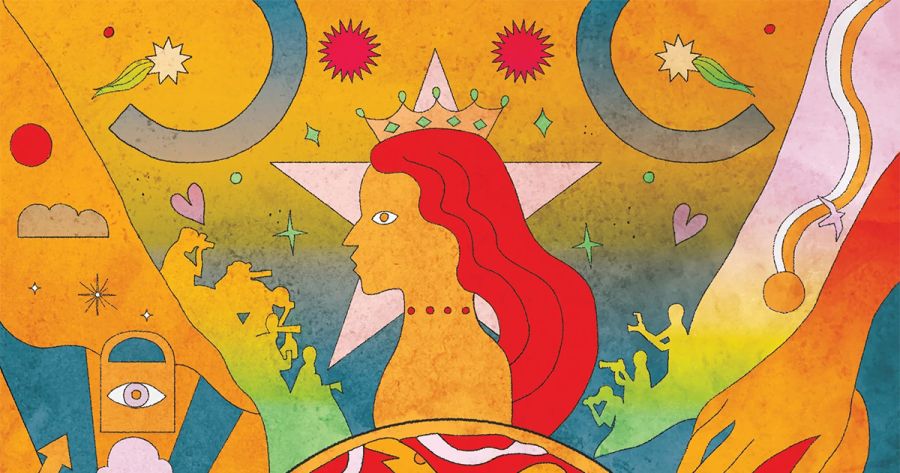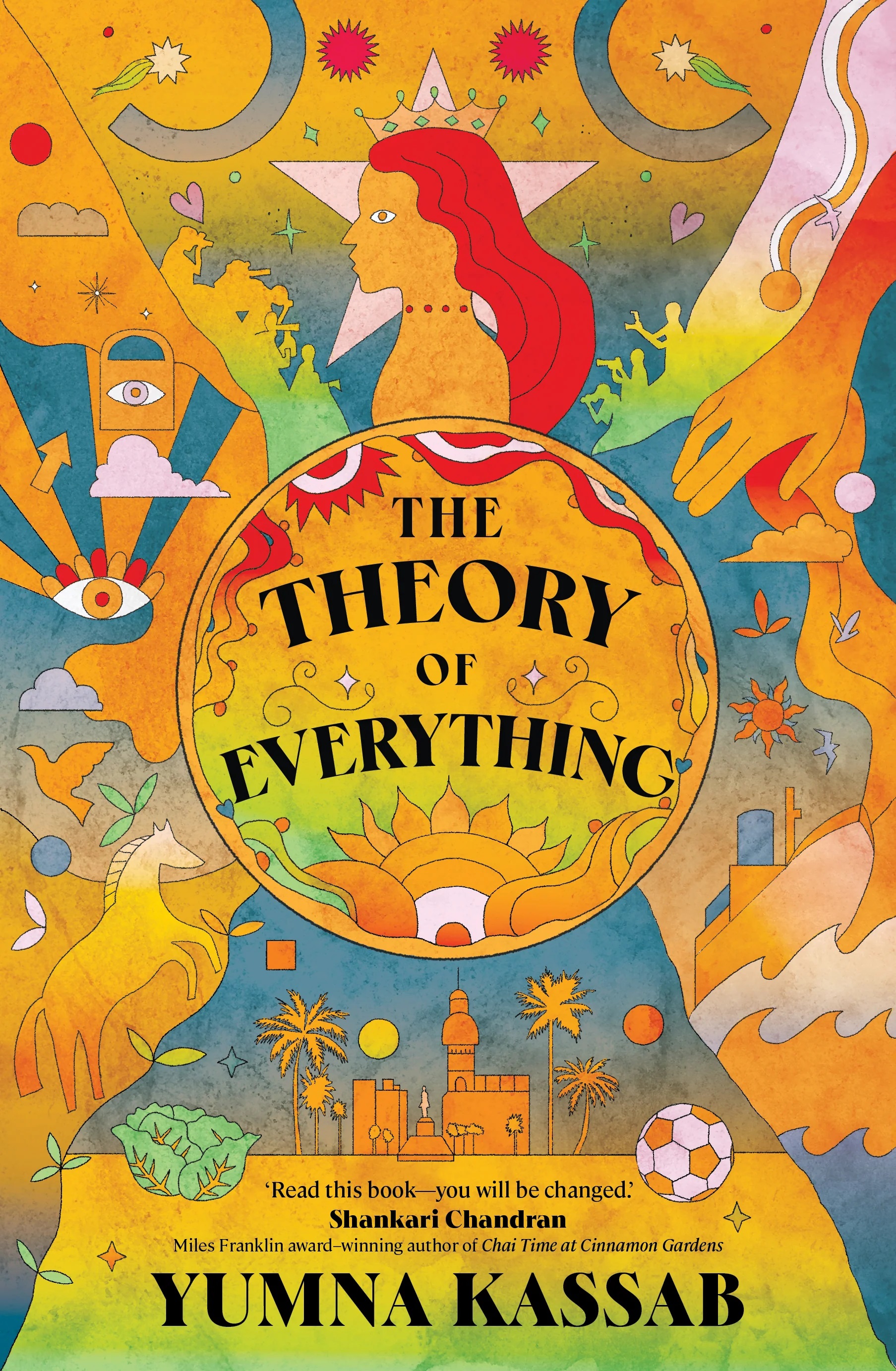
- Free Article: No
- Contents Category: Fiction
- Review Article: Yes
- Article Title: Trials and puzzles
- Article Subtitle: An essay wearing fiction's mask
- Online Only: No
- Custom Highlight Text:
One of the advantages of the novel, and a major reason for its endurance into this messy century, is its elasticity. The novel’s willingness to contain a multiplicity of forms can defeat even the most radical attempts to shatter its structure. Another, perhaps contradictory advantage of the novel is its capacity for direct insight, opening a portal into another human mind at a particular time in human history.
- Book 1 Title: The Theory of Everything
- Book 1 Biblio: Ultimo, $34.99 pb, 297 pp
- Book 1 Cover Small (400 x 600):

- Book 1 Cover (800 x 1200):

- Book 1 Readings Link: https://www.readings.com.au/product/9781761153327/the-theory-of-everything--yumna-kassab--2025--9781761153327#rac:jokjjzr6ly9m
Yumna Kassab’s latest offering is both a test of the novel’s stretchiness and a display of its capacity for connection. Kassab is a postmodernist with a joyous disregard for convention. The Theory of Everything is her most daring book to date, one in which she has fully committed to her project of fragmentation and polyphony.
The novel begins with a vignette reminiscent of Margaret Atwood’s 1992 story ‘Epaulettes’, in which war is replaced by a stadium contest. Instead of Atwood’s prancing delights, however, Kassab gives us an image of political violence all too close to the dystopian reality we see daily on our screens. The notion of games, of trials and puzzles, spins through The Theory of Everything. Kassab asks, as so many writers before her have: are we players in these games? Or are we pieces?
In part, this is an essay wearing fiction’s mask, much like her novel Politica (2024), or the more self-contained The Lovers (2022). The Theory of Everything is divided into five smaller sections. Within each there are still smaller sections, sometimes connected, other times isolated – as small as a single line. Beginning to read with the familiar notion of fragments in mind, I soon began to think of these microfictional pieces as shards: some are prismatic, others reflective, still others dangerously sharp.
Some of the longer sections follow characters in places and historical periods that have been stripped of their specificity. A famous footballer struggles with his image, his career and his family; his daughter repeats the pattern, but reckoning with another degree of difficulty. An ageing film star haunts a fading hotel, constantly reframed by her fans’s nostalgic ideas. An exile-by-choice lingers in a quiet city, trying to reinvent a life away from home. (The location may be specific, but Jamel’s story is an exercise in defamiliarisation.) Each of these characters is constituted and constructed by the gaze of others, their identities circumscribed by how they are seen.
Kassab has an insatiable appetite for formal play that she probably wishes more Australian readers shared. Some of her shards take the shape of monologues. There are vignettes predicated on repetition, like the striking ‘Sorry’, a page of apologies. There are call-and-response poems, vox pops, glossaries, and other lists. The Latin American influence is strong, borrowing greedily from Eduardo Galeano’s telling fragments, Gabriel García Márquez’s shimmering tenses, Roberto Bolaño’s enjoyment of clues. Structurally, Kassab has taken Ursula Le Guin’s ‘carrier bag’ theory of fiction to heart.
This is a writer who wears her influences on her sleeve and is not afraid to tell readers how she wishes to be read. Her critical gaze is constant, shifting. Mercurial, opinionated, she is often disappointed by her characters’ weaknesses when they squander their privilege or lack the moral courage for a better life choice. There is often a sense that she is scolding herself, asking: ‘in this day and age, why are you so insistent on an inner life?’ Or later, ‘why this desperation to connect?’
As Kassab dances out her set pieces, critical positions are built and dismantled, sometimes faster than they can be climbed. At times this self-conscious approach can feel as though it is the reader she is haranguing – I longed for less fancy footwork and a little more flow. But gradually, it becomes possible to zoom out and see the mosaic which Kassab has constructed from her shards, and how it connects to her body of work.
It is an irony of postmodernism that it still carries within it some of modernism’s old ideals. Within the polyphony and cynicism, the pick-and-mix of styles and registers, the pose of ‘no more grand theories!’, there remains the hopes of individual liberty, of personal meaning, and of connection.
As in all her books, Kassab is here preoccupied with the dynamics between the individual and the collective: how we are acted upon by social and political forces, and the subtleties of these forces in our lives. Its title may be tongue-in-cheek, but The Theory of Everything is, at least in part, a theory of freedom. It addresses the entanglements of loyalty, nationhood, family, history, language, and class. It gestures to the others with whom we must (reluctantly) live, to the chances we have to get away, and to the inescapable limitations of those chances. Kassab knows well that the problem of freedom is also the problem of restlessness, and this is a very restless book.
Kassab is less aphoristic here, more questing, and at her best when she allows her reader space to pose questions of their own. A love of books and reading is always at the fore, and alongside her diversions with form there is a deep affection for specific novels, as well as for the novel’s expansiveness.
The Theory of Everything ends in fabulist mode, in another multi-genre game: Scheherazade meets Anne Rice meets the medieval trope of a chess game against death. At stake are the problems of exile and representation, the problem of telling stories. It is a playful closing move.
Despite an occasional sense of helplessness in the face of historical forces, The Theory of Everything is a pleasure to read. It offers the kind of insight into another mind that is unique to literature and testifies to its lasting value as an intellectual adventure. This is a busy, self-critical, unruly novel, one that contains multitudes.


Comments powered by CComment